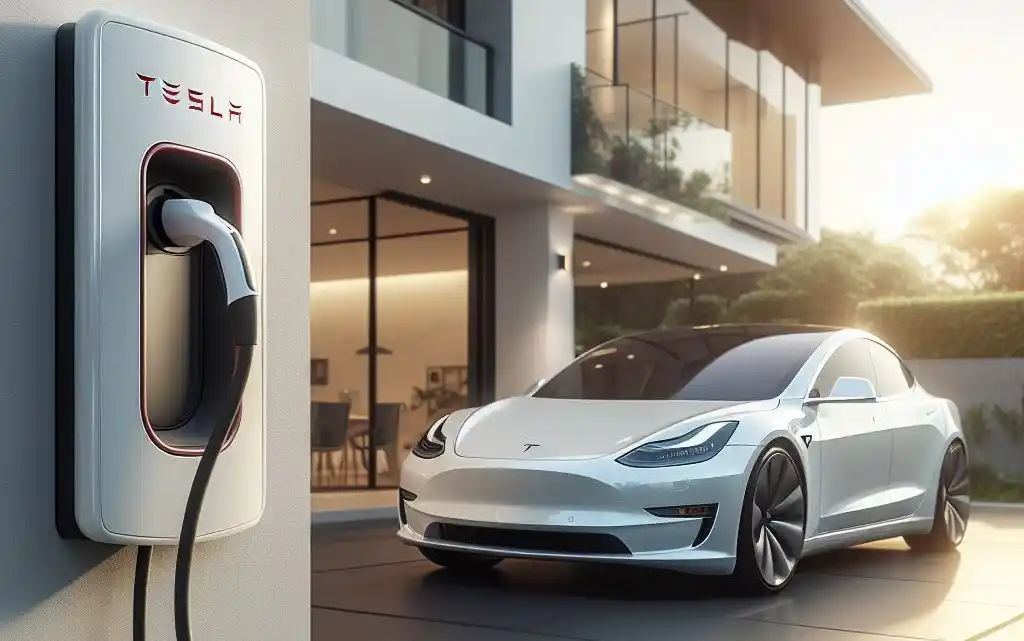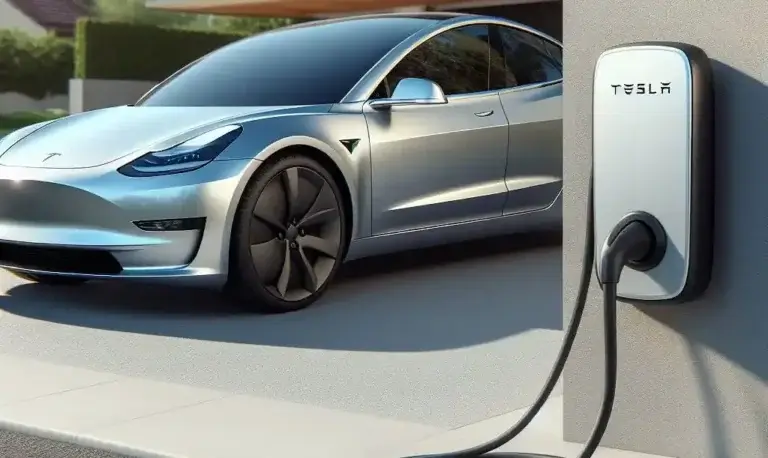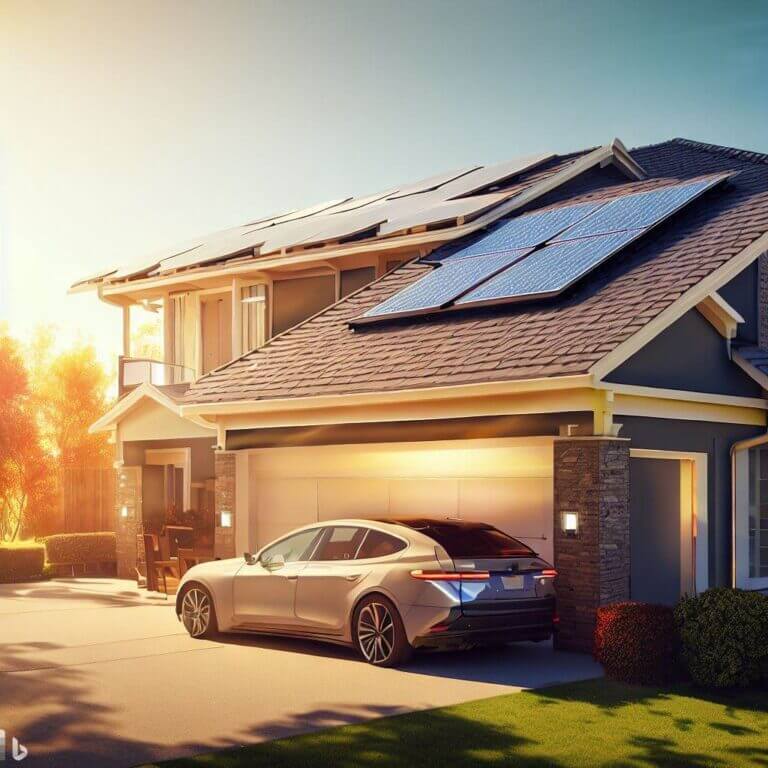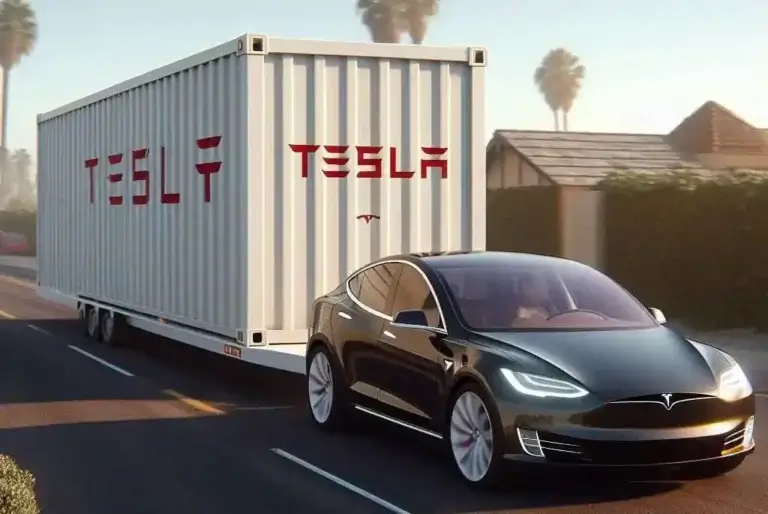Tesla Charging Stopped If Unexpected: Causes and Solutions
Have you ever had your Tesla vehicle suddenly and unexpectedly stop charging before reaching full battery capacity? This frustrating experience is more common than you might think for Tesla owners. In this comprehensive guide, we’ll cover the main reasons why Tesla charging may stop unexpectedly and provide troubleshooting tips to get your electric vehicle charging properly again.
Table of Contents
Introduction to Unexpected Tesla Charging Stoppages
When you plug in your Tesla to charge, you expect the charging session to proceed smoothly all the way through to 100% battery capacity. However, many Tesla drivers have experienced the vehicle stopping charging randomly at some point before a full charge is reached. This may happen when charging at home using a Tesla Wall Connector, a Tesla Mobile Connector, or even Tesla Superchargers.
There are many potential underlying causes for interrupted or terminated charging:
- Software glitches
- Local power grid issues
- Problems with the charging equipment
- Onboard computer failures
- User errors
- And more
While unexpected charging stops may only be temporary setbacks, they can also indicate serious electrical or mechanical problems in some cases. Regardless of what’s behind the interrupted charging sessions, it’s frustrating for owners who rely on their Teslas for transportation every day.
Understanding why it happens and identifying solutions can help you minimize inconvenient charging problems moving forward. This guide covers troubleshooting steps for various charging-stopped scenarios. Armed with that knowledge, Tesla drivers can hopefully resolve charging difficulties quickly when they pop up.
Main Reasons Tesla Charging May Stop Unexpectedly
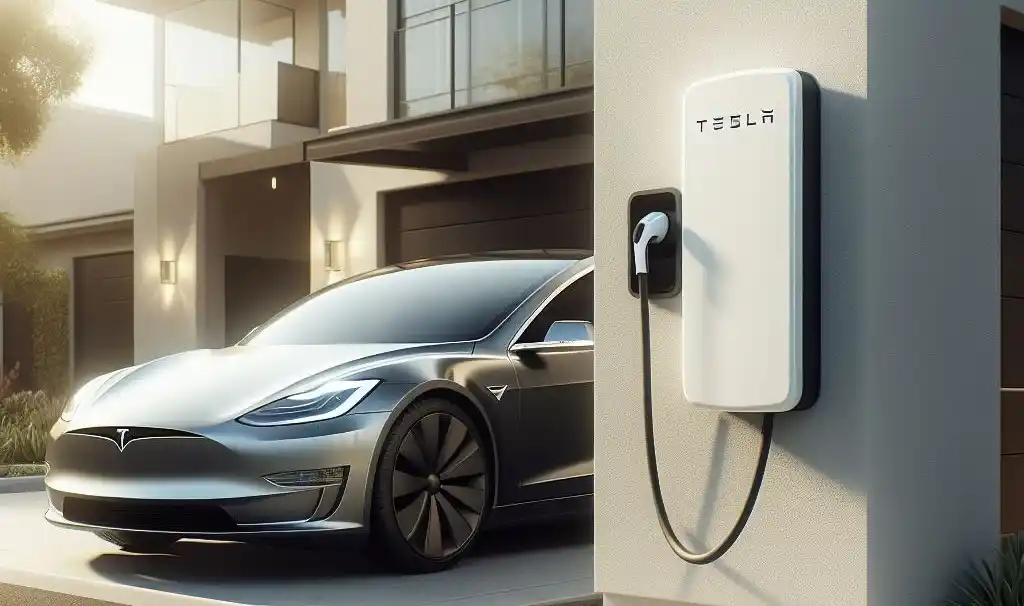
There are several possible culprits behind sudden interruptions to Tesla charging sessions, including:
Software Glitches
Tesla vehicles receive over-the-air software updates regularly. Although most firmware upgrades improve performance and fix bugs, some occasionally inadvertently introduce new problems. Software issues after an update could potentially lead to charging problems like:
- Unexpected charging terminations
- Inaccurate range and charging estimates
- The user interface freezes when managing charging
- Conflicts communicating with charging stations
Rebooting the touchscreen computer, resetting charging settings, installing the latest firmware release, or scheduling service may alleviate electrically connected software glitches stopping charging sessions prematurely.
Power Grid Fluctuations
Local electricity infrastructure maintains supplied voltage within a safe operating range. However, blackouts, brownouts, utility equipment issues, or severe weather can cause grid power levels to fluctuate beyond that normal range. Tesla’s onboard charging systems automatically stop sessions when detecting under or over-voltage conditions outside set tolerances.
A sudden resumption of charging 2-3 minutes later typically points to temporary power blips as the culprit. Contact your electricity provider or check their reported outages if fluctuations routinely disrupt consecutive charging attempts.
Problems With Charging Equipment
Defective or damaged components in the various Tesla charging accessories can also randomly interrupt charging:
- Mobile connectors – This portable EVSE charges via household wall outlets. Heat damage, wear/tear, or manufacturing defects in the mobile connector’s wiring or parts may trigger charging to halt intermittently.
- Wall connectors – Hardwired Tesla Wall Connectors enable faster home charging rates than mobile connectors. However, similar internal hardware issues in the Wall Connector cause sporadic charging stops in some cases.
- Supercharger stalls – Tesla’s exclusive fast charging network occasionally suffers from specific Supercharger stall failures that abruptly end charging sessions before batteries are fully replenished. Changing to a different Supercharger stall typically allows normal fast charging functionality to resume.
Carefully inspecting connectors and cables for issues before charging sessions may help identify faulty equipment needing repair or replacement to enable reliable device functionality. Tesla mobile app notifications warning of Wall Connector or Supercharger stall faults implicate onsite charging equipment problems specifically during interrupted sessions.
Onboard Computer Failures
The onboard central touchscreen computer runs vehicle charging management processes when plugged into different power sources. While rare, internal computer problems can also randomly stop Tesla charging activities through:
- Software freezes halting charging commands
- Communication failures between systems
- Faulty temperature or voltage monitoring components
Computer troubles usually generate fault notification alerts on the central touchscreen or Tesla mobile app as well. Scheduled service appointments allow Tesla technicians to diagnose suspected computerized charging issues and identify any necessary repairs.
User Errors
Sometimes we are our own worst enemies when it comes to unexpectedly stopping Tesla charging sessions. Driver mistakes like these can mistakenly trigger sudden charging interruptions:
- Accidentally pressing the charging port latch or other buttons that halt charging
- Forgetting to fully insert charge cable connectors into their ports
- Scheduling incorrect off-peak charging start/stop times via the vehicle settings or mobile app
- Using incompatible third-party charging equipment not approved by Tesla
Double-checking appropriate connector-to-charge port orientations and alignments before starting charging sessions helps identify mistakes. Review programmed charging schedules as well if sessions consistently stop at the same time every night. A thorough inspection and user caution cut down on many self-induced charging fails.
Let’s explore the main troubleshooting tips for resolving each general charging interruption category in more detail now.
Troubleshooting Tesla Charging Stopped Unexpectedly Issues
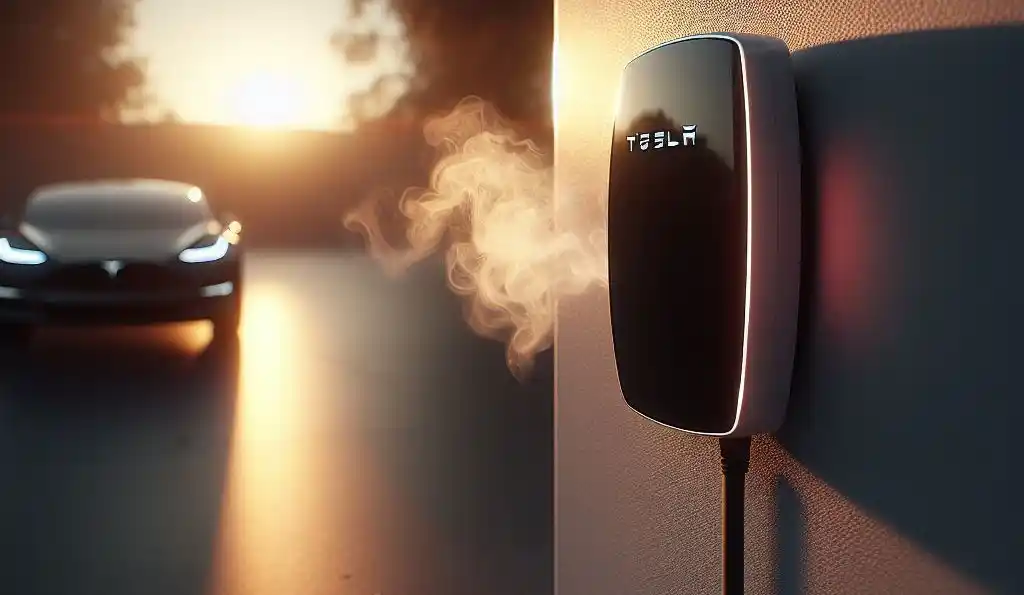
When your Tesla does sporadically stop charging prematurely for unclear reasons, employ these troubleshooting techniques to identify likely fixes to getting your electric car charging reliably again:
Check for Recently Installed Software Updates
As mentioned, some over-the-air software upgrades inadvertently affect normal charging functionality upon installation. If your Tesla only began exhibiting random charging interruption symptoms after the newest firmware update, try these steps to correct suspected software-related issues:
- First, reboot the onboard central touchscreen computer to clear any temporary memory glitches causing charging-stopping bugs. Navigate to Controls > Service > Reboot touchscreen computer and confirm reboot action.
- If charging problems persist post-reboot, try resetting charging system settings next. Go to Charging > Charging settings > Reset charging settings. This clears any errant customized programmable rules impacting charging as well.
- Check again if issues are resolved after the above steps. If not, contact Tesla to determine when the next optimized firmware update that resolves demonstrated problems will be released.
- Roll back to the previous firmware version temporarily if intermittent charging faults create safety risks or impact daily driving needs significantly until an improved update is deployed. Schedule service if problems began directly after an update that can’t roll back as the underlying cause is likely.
Watch for Tesla official notifications when new over-the-air software revisions addressing current update charging bugs are released. Download ASAP to hopefully restore normal functionality quashing those random charge interruptions.
Investigate Local Grid Electricity Issues
Sporadic home, commercial site, or Supercharger power fluctuations explain some mysterious Tesla charging stops. Is your vehicle exhibiting multiple interrupted charging attempts within a short timeframe that lasts just 2-3 minutes before resuming charging on its own? Local grid instability likely explains such patterns if so.
Investigate wider area power issues through these actions during repeated brief charging fails like those:
- Check the electricity provider’s website or social media pages for reported outages in your charging location area
- Contact the utility company directly to inquire if they show or receive customer reports of localized voltage fluctuations recently
- Try charging your vehicle at another home or public charging site in a different nearby power grid zone
- If charging problems disappear at other locations, coordinate with the electricity provider to further isolate potential supply equipment deficiencies impacting local lines
Determine if your residence relies on just a household wall outlet or hardwired solar-provided power too. Both options tend to suffer voltage stability weaknesses compared to direct-to-grid site connections. Consider electrician consultations regarding potential wiring upgrades enabling reliably stable charging circuits if such setups currently supply your EVSE connections.
Confirm no Wider Grid Problems Before Investigating Vehicle or Charging Equipment
Cannot find indications of regional electricity distribution issues mentioned? Move on to inspecting the Tesla vehicle itself or charging gear malfunctions next as the probable intermittent charging loss causes instead in that case.
Inspect Mobile Connector and Wall Connector Condition
Tesla’s portable Mobile Connector and fixed Wall Connector offer more affordable and convenient home charging solutions than public EVSE networks. However, their compact construction, integrated components, and direct exposure to elements or physical damage risks make Tesla’s first-party chargers prone to eventual issues stopping charging too.
Check both connector visual condition and during active charging sessions for common failure clues:
Mobile Connector Verification
- Thoroughly inspect the entire exterior and plugs on both ends for damage or cracks that may indicate internal wiring problems. Replace if worn or deteriorated.
- Noticeable hot spots when actively charging point to potential overheating issues frequently interrupting charging.
- Tesla app warning of reduced charging speed from your household outlet also hints at equipment limitation triggers randomly halting charging at higher pull rates.
Tesla mobile connectors utilize standard national electrical plugs on the charging end for interchangeability. However, household wall receptacle connectors tend to degrade faster than permanently hardwired outlets. Loose, corroded, or faulty home outlet connections then explain some intermittent charging stops as power gets disrupted between source and Tesla vehicle temporarily.
Consider contacting an electrician to inspect the room outlet providing your Mobile Connector charging input power if you cannot find visible issues on the connector itself. Replacing outdated or incompatible household electrical sockets with fresh high-amperage outlets meeting the latest regulations may resolve and rectify underlying charging problems.
Wall Connector Verification
- Similarly, check the entire Wall Connector external body and cabling connections leading back to household electrical panels for any physical deterioration or gaps possibly indicating internal wiring issues.
- Notice any hot spots concentrated in one area during charging sessions pointing to potential overheating problems triggering charging fails.
- Reduced maximum charging rate warnings on the central touchscreen also typically suggest equipment deficiencies randomly interrupting higher amperage charge sessions.
Given Wall Connector’s fixed installation, inspect surrounding wall surfaces for potential water incursion or pest infestations that may compromise integrated circuitry not designed to withstand such exposure risks compared to the weatherproof Mobile Connector design.
As Wall Connectors stay permanently powered when installed properly, faulty wiring buried behind walls is harder to identify visually beforehand compared to direct Mobile Connector inspections. But charging interrupts traced back to the first occurrence after Wall Connector installation or housing renovation projects help narrow down the probable root cause.
Schedule a certified electrician visit to run diagnostics on the entire Wall Connector wired circuitry in that case to pinpoint any hidden issues needing repair.
Try Different Supercharger Stalls
Do your intermittent charging interruptions exclusively occur when Supercharging instead of home charging equipment? Shift to alternate Supercharger stalls before assuming wider station equipment failures stopping charging sessions. Inspect for on-screen charging stall-specific fault notifications too when pads cut off prematurely.
Select another Supercharger pad and initiate a fresh charging session. charging resumes as expected, likely assuming the first stall suffers some non-critical issue technicians can address later, whether loose connectors, power fluctuations, or firmware needing resets. Confirm several stalls exhibit problems charging before reporting the entire site’s charging equipment possibly requiring maintenance.
Tesla support can also verify remotely historical charging data indicating only singular stall faults versus systemic station problems and widespread stalls malfunctioning simultaneously. Continue utilizing properly working pads in the meantime unless every stall demonstrates common faults preventing even temporary charging restarts.
Schedule Service Appointment If Persistent Issues
After methodically trying the above troubleshooting tips matched to your unique Tesla charging-stopping symptoms to no avail, schedule a service appointment for further diagnosis. Provide service center details regarding:
- Exact charging equipment used when issues occur (Mobile Connector, Wall Connector, etc)
- Any recent changes before first charging interruptions (software updates, power modifications, etc)
- Frequency and duration of failed charging sessions
- Charging restart successes when trying other equipment or locations
Certified Tesla technicians utilize proprietary tools and data access to evaluate detailed vehicle charging records unavailable to owners. Thorough insights into historical charging events highlight precise patterns that help identify root causes of common electrical or system faults interrupting charging sessions randomly.
While some problems require straightforward wiring repairs or replacements, computer or software fixes may necessitate parts ordering delays before mending charging problems permanently after visits. Continue utilizing available charging options unaffected by issues in the interim.
Preventing Future Unexpected Tesla Charging Stops
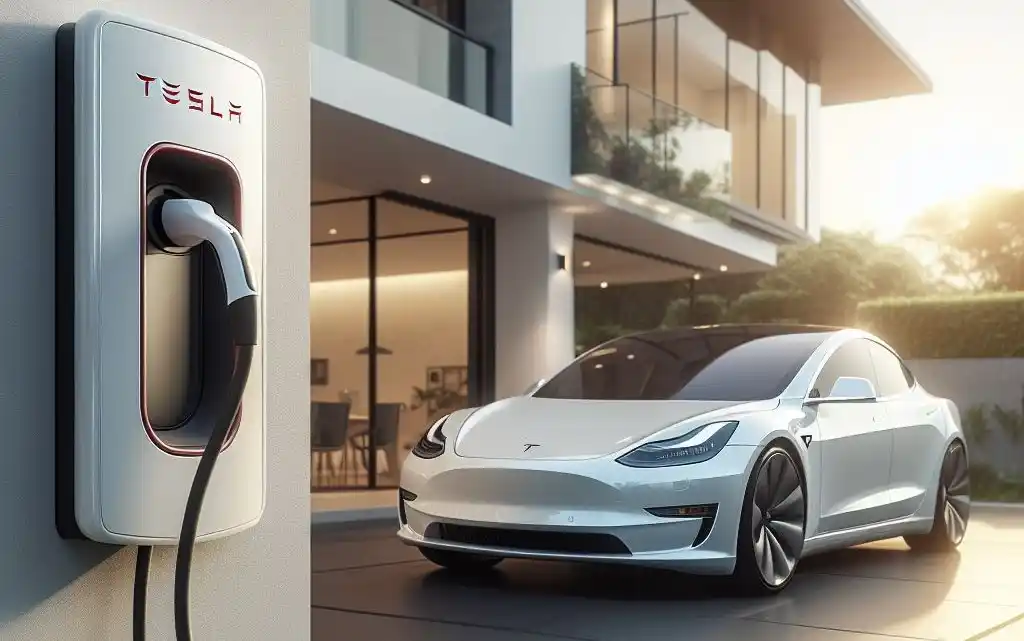
Once you finally determine the specific trigger causing repeated interruptions of Tesla charging cycles and address it through the troubleshooting tips above, take proactive steps to prevent repeat issues down the road through:
Charge More Frequently
- Recharge Tesla batteries more often at lower incremental levels to reduce strain on charging equipment components or systems less likely to overheat or malfunction during shorter sessions.
- Set charging reminders at 40% battery charge rather than waiting until 20% or lower before plugging in again.
- Rotate different local charging options (home, work, Superchargers) splitting total weekly recharging needs across multiple equipment.
Keep Software Updated
- Install the latest Tesla software updates as soon as notifications indicate availability to immediately fix recently introduced bugs that may impact charging problems before growing more widespread.
- Turn on the advanced software update setting to receive early access to vehicle updates for early identification of potentially inadvertently introduced charging faults on cutting-edge revisions.
Care & Maintenance for Charging Equipment
- Frequently inspect charging connectors and cables for damage, frayed wires, or deteriorated components that may fail or interrupt charging if neglected further.
- Consider proactive Wall Connector servicing annually or biannually to validate all internal parts remain in reliable functioning condition before issues arise leaving you unable to charge until appointments are available.
- Report any identified Supercharger stall damage, exposed cabling, or non-function immediately to Tesla Support for prompt repairs restoring full site capacity.
Being vigilant in monitoring home power grid feeds supplying your EVSE connections for instability, staying current on Tesla software updates immediately improving vehicle systems, and properly maintaining first and third-party charging hardware minimizes opportunities for random faults developing that may halt charging sessions at inopportune times until addressed.
Key Takeaways and Next Steps if Tesla Charging Stops Unexpectedly
Having your Tesla abruptly cease charging before expected leaving batteries partially replenished proves extremely inconvenient whether late for appointments across town or stranded road-tripping far from home. Hopefully identifying the most common underlying technical and user-error causes using tips in this guide helps troubled EV owners restore seamless charging functionality once again.
Key troubleshooting steps to try first if encountering sudden unexpected Tesla charging stops include:
- Reboot the vehicle computer if an issue arises post-software update
- Check the power company for grid outages/fluctuations
- Inspect charging connectors and cords thoroughly for damage before/during a charging session
- Test alternate home charging equipment or public charging locations
- Switch Supercharger stalls a few times to pinpoint any stall-specific faults
If the problem persists despite best troubleshooting efforts, document details to share with Tesla service technicians for advanced diagnostic and repair assistance. Consider proactive maintenance steps afterward like charging more often at lower rates and inspecting equipment routinely to minimize odds of repeat faults down the road as well.
Stay vigilant and take swift action at the first signs of any charging abnormalities or interruptions to maximize the uptime and reliability of your Tesla electric vehicle’s critical charging needs.
Here are some sample FAQs to add to the end of the article:
FAQs: Tesla Charging Stopped If Unexpected
Still have some burning questions about why Tesla charging may stop unexpectedly and how to get it working properly again. Check out answers to these commonly asked troubleshooting questions:
Why does my Tesla stop charging randomly at home but not in public chargers?
This points to a potential wiring, outlet, or breaker issue on your household electrical system. Contact an electrician to inspect connections between your Wall Connector or Mobile Connector to wall power sources. They can isolate and repair any deficiencies interrupting sustained power to your vehicle’s charging system.
My Tesla immediately stops charging if I use the max Wall Connector amperage setting but not lower amp rates. Why?
Thermal protections may engage and halt charging if attempting to draw too many amps on a circuit shared with other major household appliances. Have an electrician evaluate if higher dedicated wiring upgrades are needed supporting max charging amperage without tripping breakers.
Mobile Connector charging stops after 30 minutes and then won’t resume without replugging. What’s happening?
This behavior indicates potential inadequate household outlet grounding according to EVT/SAE safety standards. Consult an electrician to replace outdated or 2-prong outlets with modern, properly grounded outlets meeting the latest electrical codes to enable uninterrupted charging again.
The Tesla charging symbol on my dashboard randomly switches between blinking and solid yellow. Why?
Blinking yellow icons specifically indicate a temporary external factor actively interrupting the charging connection. So if the symbol toggles back and forth, likely wiring deficiencies between the household breaker box and the Wall Connector or local grid instabilities if using public chargers causing repeated power disconnects.
Charging stops briefly but frequently when Supercharging. Anything to check before reporting site faults?
Try shifting to different Supercharger pad positions first during repeated short 2-5 minute charging fails. If charging resumes consistently when plugging into alternate stalls, likely just a singular pad connector or cabinet issue present rather than the entire site malfunctioning and requiring extensive repairs later.
Still have questions? Contact Tesla Support with details on your specific charging issues for further individualized troubleshooting assistance to get your electric vehicle charging properly again.

